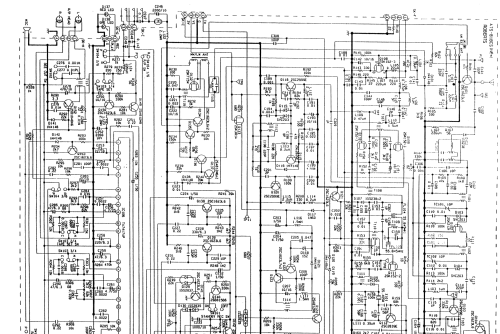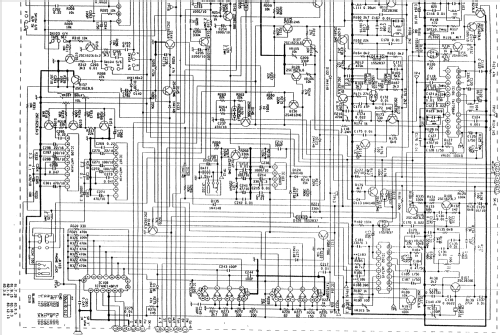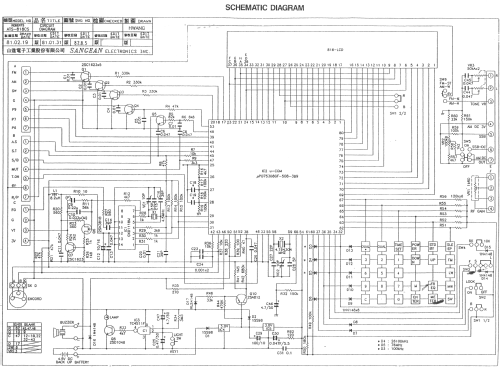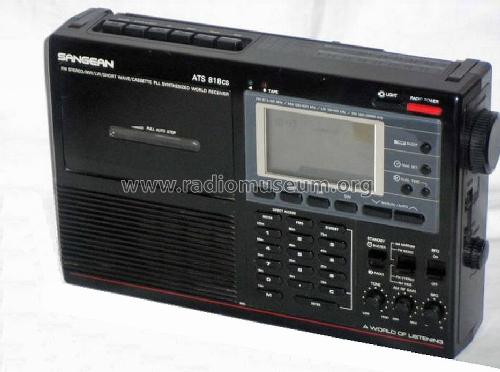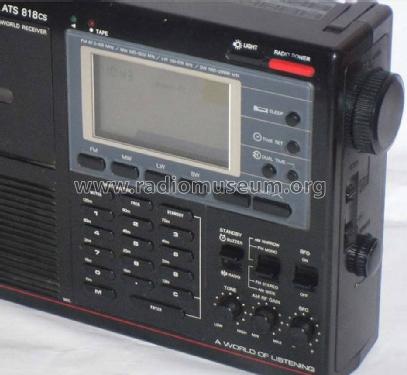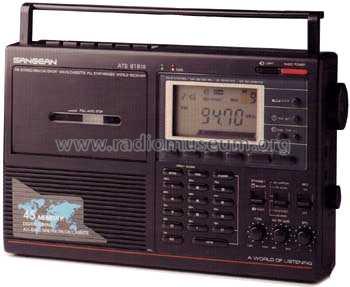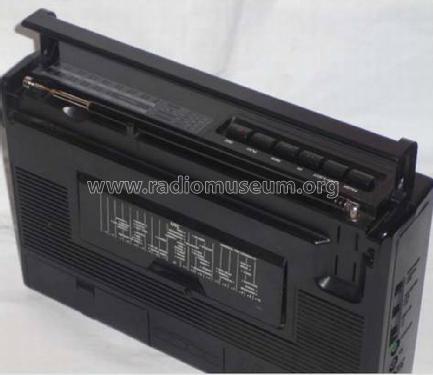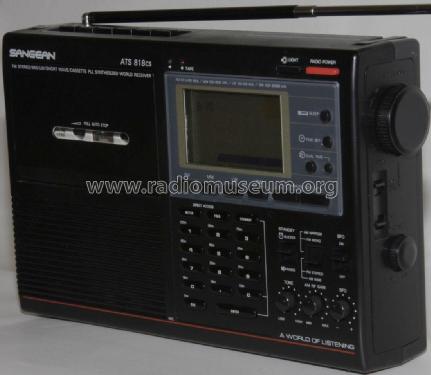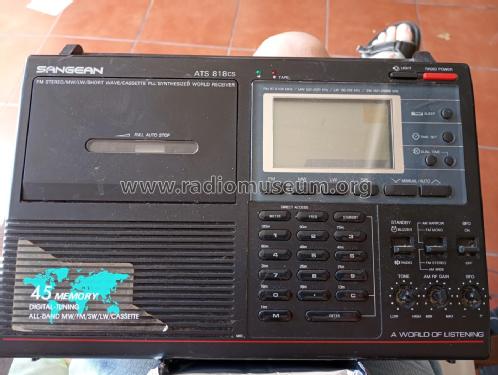ATS-818CS
Sangean; Chung Ho City
- Country
- Taiwan (Republic of China)
- Manufacturer / Brand
- Sangean; Chung Ho City
- Year
- 1992 ?
- Category
- Broadcast Receiver - or past WW2 Tuner
- Radiomuseum.org ID
- 78113
Click on the schematic thumbnail to request the schematic as a free document.
- Number of Transistors
- Semiconductors present.
- Semiconductors
- Main principle
- Superhet, double/triple conversion; ZF/IF 49995/450 kHz
- Wave bands
- Broadcast, Long Wave, more than 2 x SW plus FM or UHF.
- Details
- Cassette-Recorder or -Player
- Power type and voltage
- Dry Batteries / 4 x 1,5 Volt
- Loudspeaker
- Permanent Magnet Dynamic (PDyn) Loudspeaker (moving coil)
- Material
- Plastics (no bakelite or catalin)
- from Radiomuseum.org
- Model: ATS-818CS - Sangean; Chung Ho City
- Shape
- Portable set > 8 inch (also usable without mains)
- Dimensions (WHD)
- 300 x 190 x 70 mm / 11.8 x 7.5 x 2.8 inch
- Notes
-
AM coverage 150 - 29999 kHz; AM, SSB(BFO); direct keypad frequency entry, 45 memories, clock/timer;
Also sold as Siemens RK-670, Radio Shack Realistic DX-392 and Roberts RC818.From the European Service Manual for the Sangean ATS-818CS
Wavebands
LW: 150 - 519 kHz
MW: 520 - 1620 / 1710 kHz
SW: 1.621 / 1.711 - 29.999 MHz divided into 13 shortwave ranges. BFO for CW or SSB.
FM:87.5 - 108 MHz, 10.7 MHz IF.AM Wide 6 kHz, AM Narrow 4.5 kHz (6 dB BW, nominal)
Autoscan on AM and FM
FM Stereo on headphone socket, built in 76 kHz PLL MPX decoder and stereo indicator.
Tuning indicator.
Keyboard for direct frequency input with 45 station memories.
Clock with various switching and alarm functions.
Connections
3.5 mm stereo headphones
External 6 V DC (nominal)
AM aerial and earth.
The integrated cassette drive has AC bias for recording and is stereo recording on FM and stereo playback on the earphone socket, 40dB channel separation.Minimum reliable operation is about 4V, +/- 0.2V.
From the User Guide for the Sangean ATS-818CS
The SW band has a second set of nine memories by using 0 as a prefix.
The Standby mode is cancelled by holding C and Standby.
Other comments
- The erase appears to be a magnet, which reduces the dynamic range of recordings to about half.
- The case on some versions may have a small hole in the speaker grill to access the motor speed control otherwise, contrary to the sevice manual you need to remove the main PCB and the cassette deck to adjust the speed, using an external 4.5V to 5V PSU to simulate the typical battery level.
- The ATS-818 has a larger speaker as it's not constrained by the cassette deck.
- The main difference of the ATS-818ACS (badged as Roberts RC828)appears to be extra memories, 54 rather than 45, and the silver effect finish.
- The BFO on/off is separate to memory, so if using BFO on the Amateur bands and you select any MW, SW, LW memory you get a whistle till you turn off the BFO!
- If Standby can't be cancelled: Remove one or more main cells and one AA cpu cell. Count to 20 after the time has completely faded. This resets the CPU.
- The S meter displays the battery status for a few seconds after power off.
- The 1720/1721 split rather than 1620 / 1621 split for MW (Broadcast) and SW may only be USA models.
- AM is dual conversion, may be 49.995MHz and 455 kHz, or 55.845 MHz and 450 kHz. The VHF-FM is 10.7 MHz only
- The Manual mentions a Stereo indicator: There isn't any obvious indication, though the AM Wide / Narrow bandwitch switch enables and disables the stereo decoder.
- Net weight (2.2 lb = 1 kg)
- 2 kg / 4 lb 6.5 oz (4.405 lb)
- Price in first year of sale
- 220.00 $
- Author
- Model page created by Martin Bösch. See "Data change" for further contributors.
- Other Models
-
Here you find 77 models, 76 with images and 31 with schematics for wireless sets etc. In French: TSF for Télégraphie sans fil.
All listed radios etc. from Sangean; Chung Ho City
Collections
The model is part of the collections of the following members.
